Interview de Mike Johnson
Mike Johnson est la seule personne à avoir co-réalisé un film avec Tim Burton : Les Noces Funèbres ! Expérience unique pour lui comme pour Burton, découvrez l’envers du décor de cette collaboration artistique autour de l’animation en stop-motion :
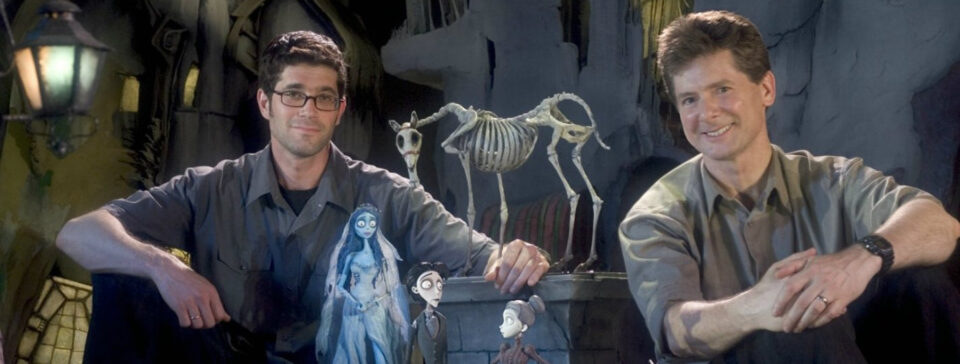
Je m’appelle Mike Johnson et j’ai co-réalisé Les Noces Funèbres avec Tim Burton. J’ai travaillé dans la stop-motion pendant 30 ans en tant qu’animateur et réalisateur sur des projets allant de publicités, clips musicaux et court-métrages jusqu’à des séries télévisées et bien sûr le cinéma.
Comment es-tu passé d’animateur stop-motion à la réalisation des Noces Funèbres avec Tim Burton?
J’étais assistant animateur sur L’Etrange Noël de Mr Jack. J’ai notamment pu animer quelques personnages en second plan, mais j’ai surtout beaucoup appris sur la stop-motion grâce au génie qu’est Henry Selick. Il m’a d’ailleurs demandé d’être animateur sur son film suivant James et la Pêche Géante.
A la suite de ça, j’ai réalisé un court-métrage inspiré de la chanson “Devil went down to Georgia” qui a gagné plusieurs prix et m’a donné de la visibilité dans les festivals. Cela m’a ouvert les portes pour réaliser des publicités. Et finalement j’ai eu l’opportunité de rencontrer Tim Burton pour Les Noces Funèbres. C’est probablement parce que mon expérience en stop-motion était basée sur l’esthétique de L’Etrange Noël de Mr Jack que nous avons eu une connexion artistique immédiate et qu’il m’a proposé le job.
C’était ta première expérience en tant que réalisateur de long-métrage. Comment s’est passée la collaboration avec Tim Burton? Comment vous êtes-vous partagé les tâches?
Collaborer avec Tim Burton était une opportunité unique pour moi en tant que jeune réalisateur. Travailler côte à côte avec l’un des réalisateurs les plus prolifiques de sa génération était un cadeau, mais aussi extrêmement challengeant à tous les niveaux.
Sous sa directive, nous pouvions travailler librement sans trop de difficultés. Nous avons d’ailleurs exploré beaucoup d’idées qui étaient, pour l’époque, très innovantes pour de la stop-motion. Pendant les trois années de production des Noces Funèbres, Tim et moi avions divisé les tâches pour qu’il puisse réaliser Big Fish et Charlie et la Chocolaterie en même temps. Il venait dès qu’il le pouvait, mais c’était à moi de diriger les équipes au jour le jour, de gérer la création des designs, de veiller au développement de l’histoire, du storyboard, de l’animation et du montage. Je voyais Tim dès que son emploi du temps le permettait, c’est-à-dire une fois par semaine, pour revoir les dessins et les éléments du scénario qui avaient été produits. Il me donnait ses notes et je faisais en sorte de les appliquer.
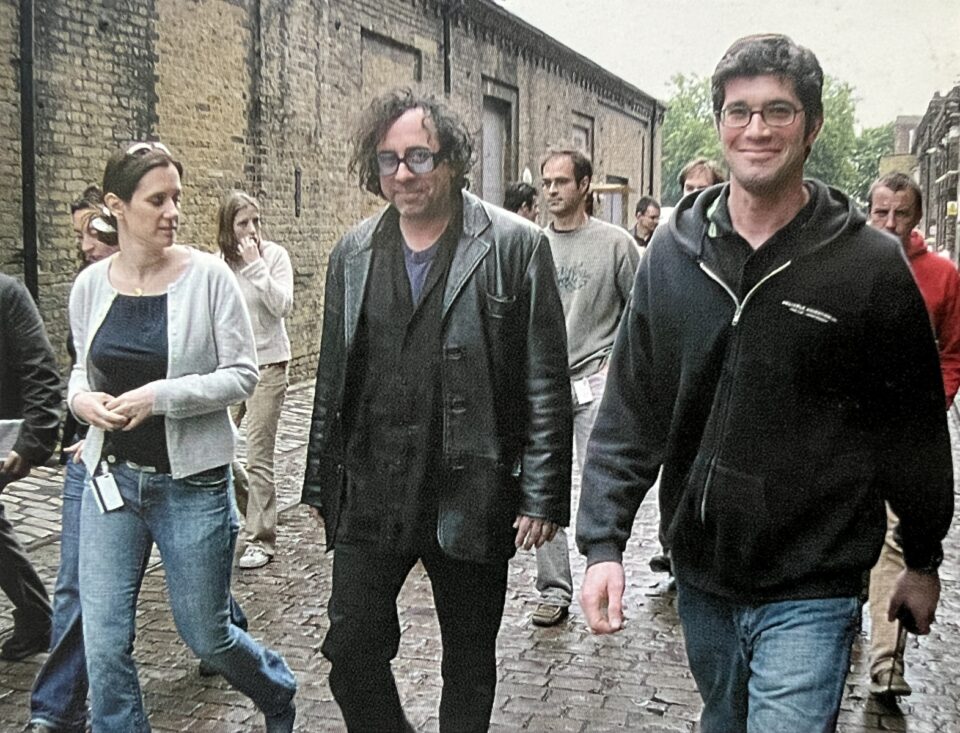
C’était son monde et sa vision, mais il me faisait confiance pour lui donner vie. Mon but était de créer un univers aussi fort que L’Etrange Noël de Mr Jack, tout en respectant le cœur et l’émotion du conte original dont le film s’inspirait. Tim était généreux avec sa créativité et ses conseils. J’ai eu la chance d’avoir beaucoup de liberté et d’encouragements vis-à-vis de mes idées pour matérialiser l’histoire.
Quelle a été ta partie préférée pendant la réalisation du film?
C’est difficile pour moi d’en identifier une seule car la production a suivi beaucoup de phases différentes, avec chacune son lot de défis et de récompenses. Pendant la pré-production, j’ai adoré mener la création des personnages, du croquis au dessin détaillé, en passant par la sculpture et l’animation finale. C’est un petit miracle de voir un personnage se matérialiser en trois dimensions, c’est presque comme observer une naissance.
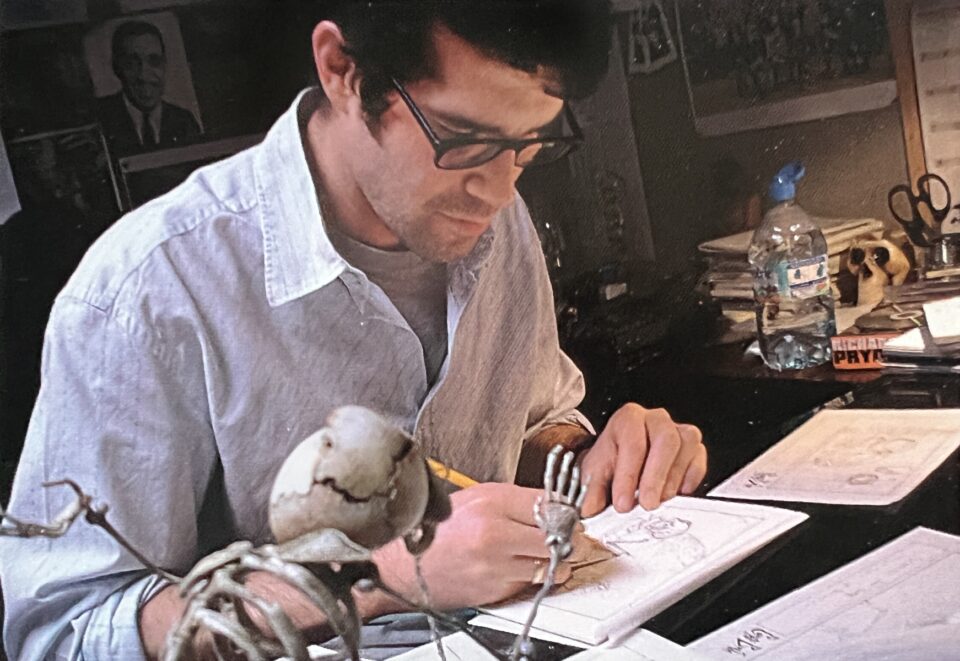
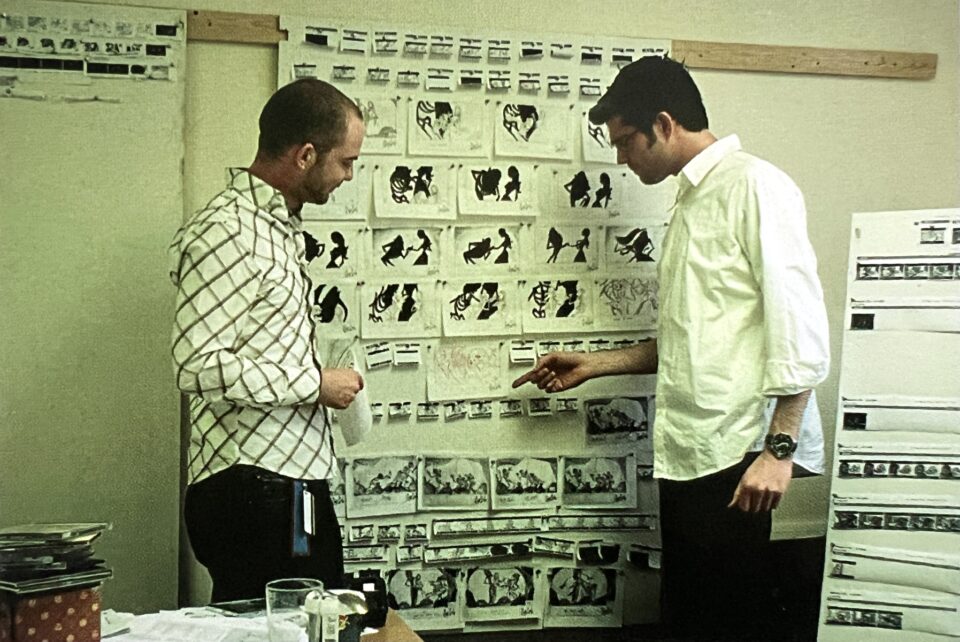
Pendant la production, quand l’animation bat son plein, j’adore l’excitation de voir un plan rapidement exécuté remplaçant ainsi le storyboard et donnant vie petit à petit au film. En post-production, regarder le montage final avec du public pour la première fois est un moment chargé d’émotions, la récompense à la fin du voyage. Il n’y a pas un souvenir qui est plus important qu’un autre. Pour moi, Les Noces Funèbres était une série de montagnes russes créatives.
D’où venait l’idée de dessiner tous les personnages sur du carton pendant la pré-production?
L’idée vient du principal concepteur des personnages : Carlos Grangel qui est basé à Barcelone. Carlos est un artiste incroyable avec un style unique. L’élégance et le raffinement de ses designs étaient complémentaires avec le style des dessins originaux de Tim Burton. Il trouvait que le carton des boîtes de céréales avait la texture parfaite pour faire ressortir ses dessins. Mais ce n’était pas n’importe quel carton ! Si je me souviens bien, Carlos utilisait uniquement le carton des boîtes de céréales américaines “Special K”. C’était la seule texture qu’il aimait. Quand Carlos voyageait aux Etats-Unis, il faisait un stock de boîtes de “Special K” pour son studio à Barcelone. De temps en temps, il était arrêté à la douane et devait expliquer pourquoi il transportait 50 boîtes de céréales. C’était très suspicieux parce que personne n’aimait ça. Je suis sûr qu’il ne pourrait plus le faire maintenant.
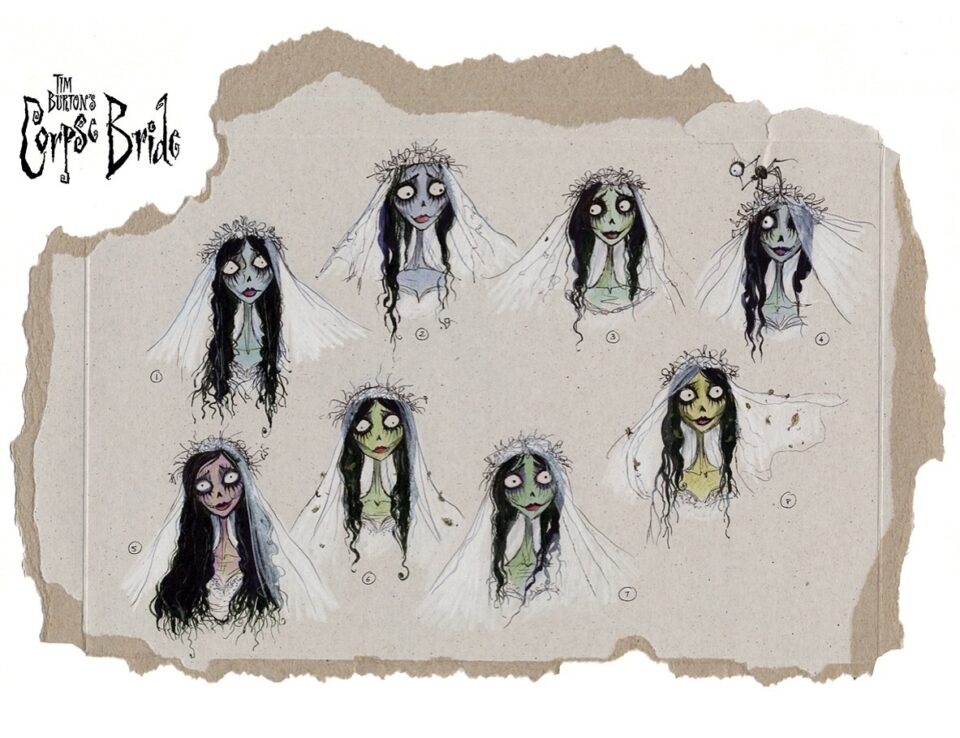
Quelle a été la scène la plus complexe à réaliser?
Il y avait beaucoup de scènes difficiles à tourner dans Les Noces Funèbres, et toutes pour des raisons différentes. Cela pouvait être purement technique: les figurines étaient parfois difficiles à atteindre et les animateurs devaient escalader de très grands décors plus d’une centaine de fois par jour. Ou alors la simple quantité de personnages à animer dans un seul plan pouvait être un vrai défi, comme la scène de foule pendant Land of the Dead ou celle de Wedding Banquet avec tous les personnages autour de la table. La robe et le voile de la mariée étaient extrêmement complexes. Son costume seul demandait autant de temps à animer qu’un personnage entier.
Outre les questions techniques, d’autres plans constituaient un vrai challenge par l’émotion qu’ils devaient dégager. Il y a beaucoup d’animateurs stop-motion qui sont excellents techniquement, mais peu ont la sensibilité d’un vrai interprète. Les plans très rapprochés, surtout à la fin du film, représentaient un défi de taille car l’animateur devait exprimer des émotions par des mouvements très subtils du visage sans aucun dialogue. Même avec les excellentes figurines créées par Mackinnon & Saunders (notre interview de Ian Mackinnon), ces plans étaient extrêmement difficiles à animer, requérant des mouvements presque microscopiques et surtout des performances sincères.
Qu’as-tu ressenti lorsque tu as montré tes squelettes en stop-motion à Ray Harryhausen?
Le jour où Ray Harryhausen est venu nous rendre visite sur le tournage était un rêve devenu réalité pour moi et pour la plupart des personnes qui travaillaient sur le film. Nous étions tous profondément influencés et inspirés par l’héritage de Ray Harryhausen. Il est le plus grand. Le Génie.
Etant le maître originel des squelettes en stop-motion, il était très intéressé de voir nos figurines et il les a trouvées réussies (pour un film pour enfant). C’est un jour que je n’oublierai jamais et je sais que toute l’équipe a ressenti la même chose.
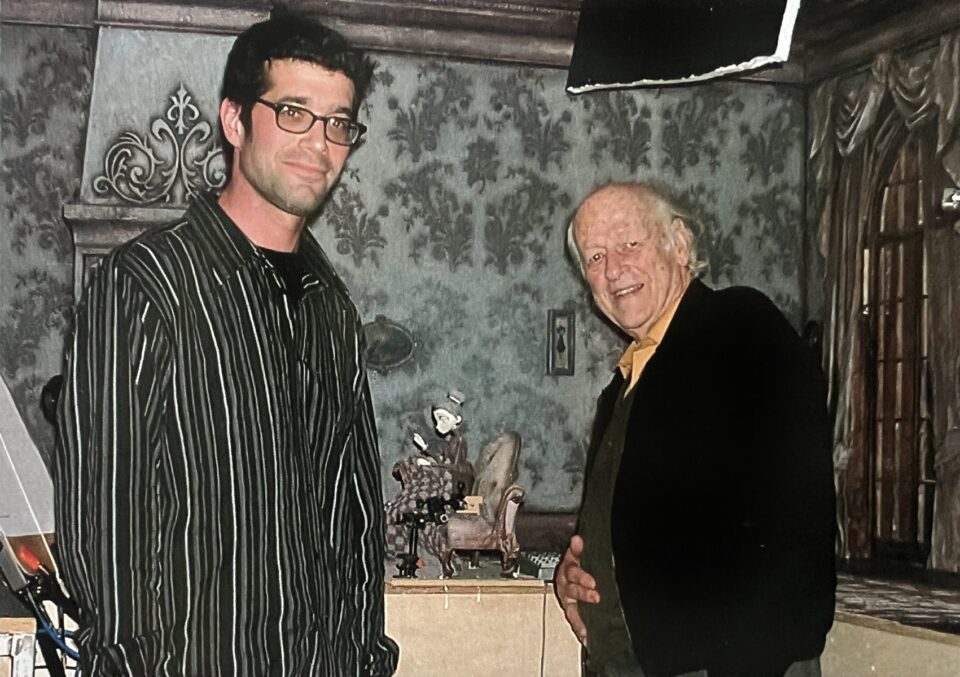
Venant de l’animation en stop-motion, comment vois-tu les images générées par ordinateur (CGI)?
Par exemple, Wes Anderson a réalisé certains effets spéciaux de Fantastic Mr. Fox en stop-motion, alors que les Studios Laika utilisent toutes les technologies possibles pour réaliser leurs plans finaux.
Je me suis mis à la stop-motion par amour pour les marionnettes et la sculpture. Les ordinateurs ne m’intéressent pas vraiment donc j’ai des sentiments mitigés envers la CGI. Réaliser de la stop-motion requiert un sens de l’immédiateté et du partage, comme un plateau de théâtre avec des décors tournants, des lumières qui chauffent et des acteurs capricieux. C’est une expérience physique et palpable qui a besoin d’une équipe d’artistes passionnés voire obsessionnels. C’est un processus fun, épuisant et enrichissant. Réaliser des images de synthèse, c’est rester derrière un bureau à regarder son écran jour après jour… Je l’ai fait et je n’aime pas ça.
Mais la stop-motion et les images de synthèse sont intimement liées, on ne peut pas avoir l’un sans l’autre. En tant que réalisateur et animateur stop-motion, j’admire les intégrations d’images de synthèse dans les films de Wes Anderson comme Fantastic Mr. Fox ou L’Ile aux Chiens. Ces films ont été pensés uniquement pour l’animation image par image. Les films des Studios Laika que j’ai vus, sont un mélange bizarre de stop-motion et d’ordinateurs qui réduisent la séparation entre les deux, tel un monstre de Frankenstein. L’animation est parfaite et les visuels sont incroyables, mais cela ressemble à des images faites par ordinateur, donc à quoi bon utiliser des figurines? Ces films pourraient être faits entièrement en CGI et personne ne verrait la différence. Mais cela reste une très belle animation. C’est peut -être ça qui compte au final.
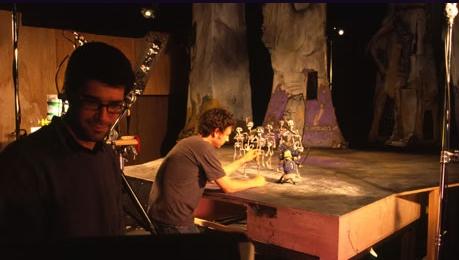
Un immense merci à Mike pour avoir partagé son expérience unique avec nous !
English Version
My name is Mike Johnson. I directed Corpse Bride with Tim Burton. I’ve worked in stop-motion for 30 years as an animator and director on projects ranging from commercials, music videos and short films to television series and features.
How did you end up from stop-motion animator to co-direct Corpse Bride with Tim Burton?
I was an animation-assistant on the The Nightmare Before Christmas. I eventually had the opportunity to do a little bit of background animation on the film and learned a lot about stop-motion from the great director, Henry Selick, who brought me on as an animator for his next project James and the Giant Peach.
Following that, I made a short film based on the song “Devil went down to Georgia” which won some awards and got me exposure on the festival circuit. This opened the door for me to direct commercials and television projects. Eventually, I had the opportunity to meet with Tim Burton regarding Corpse Bride. Probably because my stop-motion experience was rooted in the aesthetics of The Nightmare Before Christmas, we had an instant connection regarding the style and tone of Corpse Bride and he offered me the job.
It was your first time directing a feature film. How was the collaboration with Tim Burton? How did you split the work?
Collaborating with Tim Burton was an amazing opportunity for me as a first-time director. Working side-by-side with one of the most prolific and unique directors of our time was a gift, but it was also extremely challenging on every level.
Under his guidance we were able to work freely without much interference and we explored a lot of ideas that were, at the time, groundbreaking for stop-motion. During the three years that Corpse Bride took to produce, Tim and I divided the directors’ responsibilities in a way that allowed him to direct Big Fish and Charlie and the Chocolate Factory during Corpse Bride’s production schedule. Tim was on the Corpse Bride set whenever possible, but it was my job to direct the crew on a daily basis, leading the design process, story development, storyboards, animation and editing. I’d meet with Tim as his schedule permitted, usually once a week, to review the artwork and story elements that had been created. Tim would give me his notes and I’d make sure they were implemented.

It was his world and his vision, but he entrusted me to manifest it. My goal was to create something that could visually stand alongside The Nightmare Before Christmas while respecting the heart and emotional depth of the original folktale that Corpse Bride was based on. Tim was generous with his creativity and guidance. I was fortunate to have a lot of freedom and support for my ideas about visualizing the story.
What was your favorite part during the making of Corpse Bride and why?
It’s hard for me to pin down a single favorite part of making Corpse Bride because the production went through many different phases and each had its own challenges and rewards. During Pre-Production, I loved the process of guiding character-designs from sketches to refined drawings, then to sculptures and finally to animated puppets. It’s a bit miraculous to see the characters materialize on the physical plane, almost like observing a birth.


During Production, when animation is in full swing, I like the excitement of shots coming at a brisk pace, replacing storyboards and slowly bringing the film to life.
Post-Production, watching the final cut with a live audience for the first time is a highly-charged, emotional moment, the reward at the end of the journey. There’s no single memory that stands above the rest. Corpse Bride was a long series of creative peaks and valleys for me.
From where came the idea to draw character designs on cardboard paper?
The idea came from the lead character designer, Carlos Grangel, who is based in Barcelona. Carlos is an amazing artist with his own unique style. The elegance and refinement of his designs were the perfect complementary element to Tim’s original character sketches. Carlos believes that the cardboard of the cereal box provides the perfect neutral background and texture for his designs. And it’s not just any cardboard. If I remember correctly, Carlos only used cardboard from a very specific American cereal, I think it was “Special K”. That was the only cardboard he liked. When Carlos would travel to the United States, he would stock up on full cases of “Special K” in order to have a steady supply of cardboard for his studio back in Barcelona. Once or twice he was stopped at Customs to explain why he’s traveling with 50 boxes of ‘Special K’. It’s very suspicious because nobody eats that stuff. I’m sure he couldn’t get away with it now.

What was the most challenging scene to do?
There were many difficult scenes in Corpse Bride and they were challenging for different reasons. Sometimes it was a purely technical reason. Puppets were hard to reach and the animators would have to climb up and down massive sets to manipulate the puppets hundreds of times a day. Sometimes the sheer quantity of puppets in a shot was a huge challenge for animators, as in crowd scenes from the Land of the Dead, or Wedding Banquet scenes with tables full of characters. The Corpse Bride’s dress and veil were extremely challenging, and her costume took as much time to animate as individual characters. Aside from technical reasons, certain shots were challenging because of the emotional content. There are a lot of great Stop Motion animators who are technically proficient, but only a few with the sensitivity of a true performer. The extreme close-up shots, especially at the end of the film, were very challenging because the animator had to express emotion through subtle facial expressions without any dialogue. Even with the amazing puppets built by Mackinnon & Saunders (our interview of Ian Mackinnon), these shots were extremely difficult to animate, requiring almost microscopic movements and heartfelt performances.
How was it to show stop-motion skeletons to Ray Harryhausen?
The day Ray Harryhausen came to visit us on the set was a dream come true for me and for most of the people working on the film. All of us were deeply influenced and inspired by Ray Harryhausen’s legacy. He’s the Greatest of All Time. The Godfather. Being the Original Master of Stop-Mo Skeletons, he was very interested to see our skeleton puppets and he thought they looked good (for a children’s film). It’s a day I’ll always remember and I know the entire crew felt the same way.

Coming from stop-motion animation, how do you see CGI? For instance Wes Anderson use stop-motion even for VFX in Fantastic Mr. Fox whereas Laika Studios use all technologies available to create the final shot.
I got into Stop Motion through a love of puppetry and sculpture. Computers don’t interest me, so I have mixed feelings about CGI. Directing Stop-Mo has a sense of urgency and camaraderie, like a theatre with revolving sets, hot lights and temperamental actors. It’s a physically demanding journey with a crew of obsessive artists. It’s a fun, exhausting, rewarding process. Directing CGI feels more like a desk job, staring at the screen day after day… I’ve done it and I don’t like it.
But StopMo and CGI are forever intertwined and you can’t have one without the other. As a stop-motion animator and director, I admire the integration of stop-motion and CGI in Wes Anderson’s Fantastic Mr. Fox and Isle of Dogs. These films could only be visualized through the medium of stop-motion. The Laika films I’ve seen are a strange Frankenstein creation of stop-motion and computer that erases the line between the two. The animation is flawless and the visuals are amazing, but if it looks just like CGI, then what’s the point of doing it with puppets? These films could be done entirely in CGI and most people wouldn’t know the difference. But it is great looking animation. Maybe that’s all that matters.

A huge thanks to Mike for sharing his unique experience with us !

